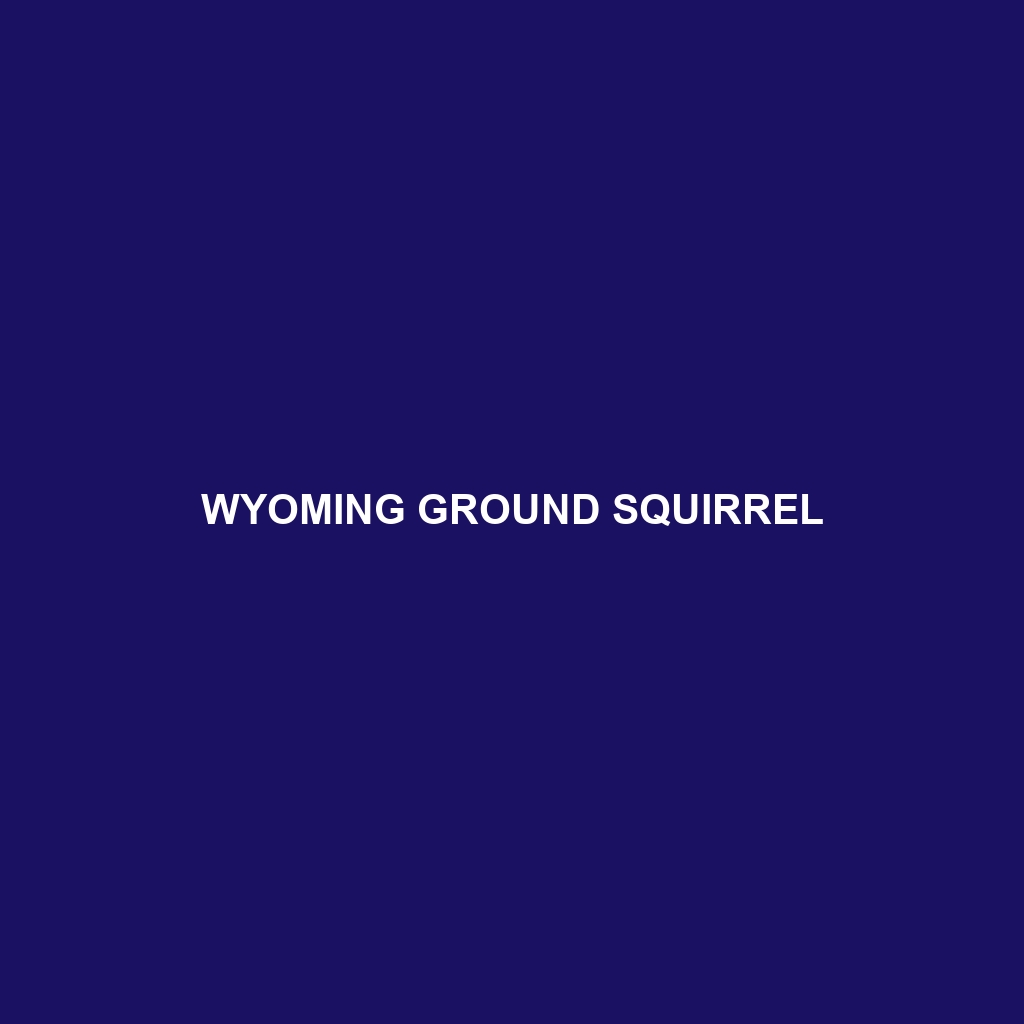Wyoming Ground Squirrel
Common Name: Wyoming Ground Squirrel
Scientific Name: Spermophilus elegans
Habitat
The Wyoming Ground Squirrel is primarily found in the grasslands and sagebrush habitats of the western United States, particularly in Wyoming, Colorado, and Nebraska. These small mammals favor open terrains where the vegetation is sparse, allowing them to dig extensive burrow systems. They typically inhabit areas with sandy or loamy soils, which facilitate their burrowing behavior.
Physical Characteristics
Wyoming Ground Squirrels are small rodents, averaging 10 to 12 inches in length, including their tails. They possess a robust body with a short neck and a broad head. Their fur is generally a mix of brown and gray, providing effective camouflage against the grassy and rocky environments they inhabit. Distinctive features include their small, rounded ears and bushy tails, which are often held high when they are alert and feeding.
Behavior
These squirrels are diurnal, meaning they are most active during daylight hours. Wyoming Ground Squirrels exhibit social behaviors, often living in colonies and engaging in alert calls to warn others of impending danger. During the active months, they can be seen foraging, basking in the sun, or playing within their colonies. In the colder months, they enter a state of hibernation, retreating to their burrows for protection against harsh weather.
Diet
Wyoming Ground Squirrels primarily feed on a varied diet consisting of grasses, wildflowers, and seeds. They are also known to consume roots and tubers, which provide vital nutrients during their active months. Their feeding habits are crucial for seed dispersal within their habitats, highlighting their role in the ecosystem by promoting plant growth.
Reproduction
The breeding season for Wyoming Ground Squirrels typically occurs in late spring, around April to June. After a gestation period of approximately 28 days, females give birth to litters ranging from 5 to 9 offspring. The young are weaned by 6 weeks and begin to emerge from their burrows shortly after. Parental care mainly falls to the mother, while males take on less of an active role during the nurturing period.
Conservation Status
As of now, the Wyoming Ground Squirrel is classified as “Vulnerable” due to habitat loss and fragmentation from agricultural expansion and urban development. Conservation efforts are focused on protecting their natural habitats and promoting sustainable land-use practices to ensure the survival of this species.
Interesting Facts
The Wyoming Ground Squirrel has an impressive sense of hearing, which allows it to detect predators from a distance. They are also known for their playful nature, often engaging in tumbling and chasing behaviors during social interactions.
Role in Ecosystem
Wyoming Ground Squirrels play a vital role in their ecosystem as prey for a variety of predators, including hawks, foxes, and snakes. Their burrowing activities help aerate the soil and facilitate water infiltration, contributing to the overall health of their grassland habitats. By foraging and seed dispersal, they also aid in plant diversity and ecological balance within their environments.
